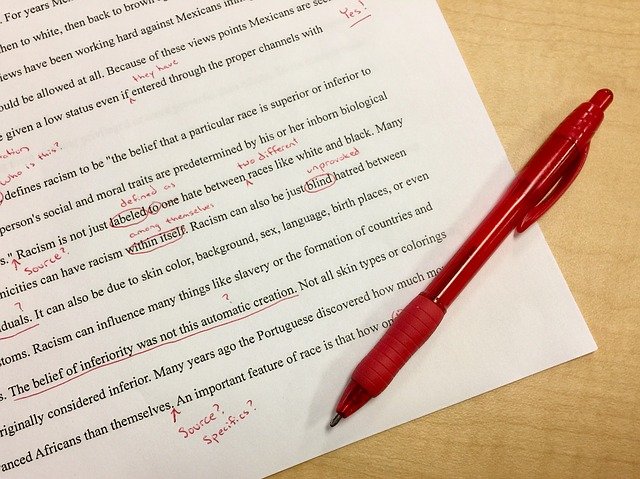Yes, these are two different concepts! In fact, these are two separate stages of working with text, which are usually worked on by different people – specialists in their field. And they differ significantly from each other. Next, we talk about the difference between editing and proofreading.
The Main Discrepancy Between Two Concepts
Although most people believe that proofreading and editing are about the same thing, they are two stages in the publishing process. Any type of writing goes through proofreading and editing. Both these stages can include correcting stylistic and grammatical mistakes.
Not every author of the text is able to check it competently. Both processes must be performed by professionals. If you need the help of experts, you should contact the writing services. Studybay, for example, has great experience in such tasks.
You should contact the editor if you want the factual base to be re-checked, assume that there may be stylistic flaws in the article, and the text itself can be simplified in perception, but do not know how to do this. Editing may include checking spelling and grammatical mistakes when changing entire sections of a work.
Proofreading is, in fact, the final stage of editing. It is performed immediately before publishing. If the maximum preservation of style is important to you if you are confident in your writing skills and are afraid that someone will break the unique author’s style, but nevertheless want the text to be perfect in terms of grammar, punctuation, and other language norms, contact the proofreader.
What Is Proofreading?
This is to check the accuracy of the text, the sequence of use and mistakes in the layout and typing. The focus is on correcting punctuation and spelling mistakes.
Proofreaders also pay attention to tables, illustrations, accuracy in lists, charts, page numbers, and more.
Proofreading means that the proofreader puts himself in the reader’s shoes and tries to read the entire work at once without interruption. Then he makes edits, taking into account the author’s style and idea.
What Is Editing?
Editing is the process of improving the style, accuracy, and formatting of text. The editing process includes adjusting grammar and spelling, checking the logic of statements, and checking facts and figures.
Editing means the editor reads the entire story out loud to get a comprehensive experience. Then he reads the sentence one by one, noting patterns (typical errors typical for a particular author) and eliminating grammatical inaccuracies.
The purpose of editing is to check the general structure of the text, the relevance of the text to the topic, the logic of the presentation of arguments and facts. The editor has the right to change the skeleton of the document, changing some of its elements. An editor is usually a person who has special knowledge in a particular field. Therefore, he can use his specialized knowledge to clarify and improve the text.
The Difference Between Proofreading and Editing: a Comparative Analysis
We compared proofreading and editing on several parameters. In short, proofreading is needed to get rid of typos, punctuation, and grammatical errors in the text, and proofreading is needed to tidy up the document and correct clarity, readability, and flow. In addition, working with an editor most often means working together on a project.
Procedure
Editing is done first. Editors work with a raw draft of the text.
Proofreading is performed after editing and typing. Proofreaders work with the final version of the text.
Changes
Editing text often changes it significantly. After that, the text may contain fewer words, sometimes even entire paragraphs are removed or replaced. The style can be changed, the language is adjusted.
After proofreading, the text does not change in its basis. It just gets better at spelling and punctuation.
Functions
The main mission of the editor is to check the document for a logical sequence of opinions, consistency of theses and arguments, the general structure of the text.
The proofreader checks the accuracy of all links, the consistency of numbers, all possible inaccuracies. In fact, the proofreader may notice what the editor missed.
Duration of Execution
Editing takes more time and effort.
Proofreading is much faster.
Collaboration With the Author
The editor works closely with the author, agreeing on the details of editing.
The proofreader does not require communication with the author.
That is, in essence, the differences between editing and proofreading lie in the fact that the editor corrects the text more deeply and thoroughly, and the proofreader cleans it superficially, without immersion in the meaning, but more from the point of view of the language. The key task is one: to make the material as pleasant as possible for perception, so that the eye does not stumble over any details.





